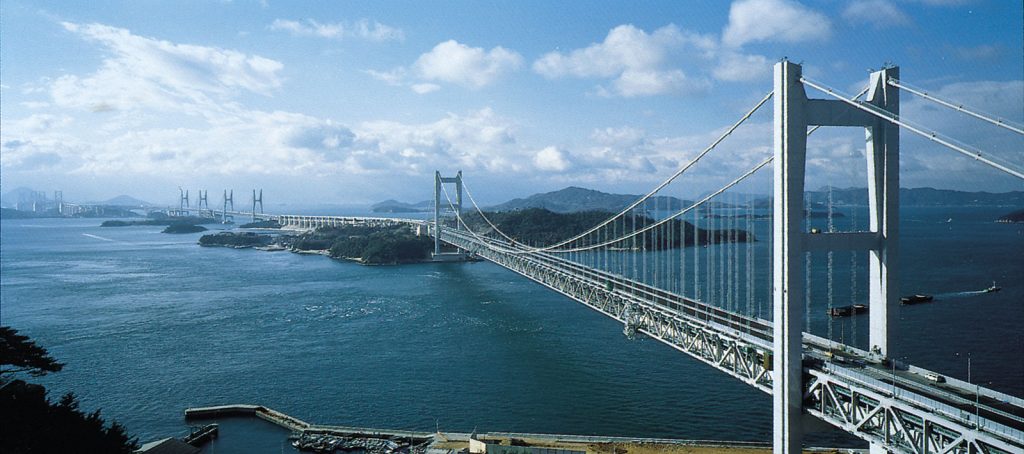Social and Economic Roles of Bridges in History
- Social role
Bridges have historically played an important social role in the society. The connection of two sides of a river through a bridge increased interactions between people and cultures from both sides of the river. This mingling of diverse cultures and beliefs promoted tolerance and understanding and, consequently, lessened violence, prejudice and war. Improved interaction also promoted the exchange of religious, political, intellectual ideas among other ideologies and improves social cohesion and resource-sharing which translated into financial benefits through trade (Elman & Elman, 2001). Bridges were also used in emergency management to evacuate people in the event of earthquakes, avalanche, flood, fire and other man-made or natural disasters. Notably, the California Department of Transportation had suggested that instead of removing the old bridges, they should be reserved for emergencies and special vehicle use (Valcik & Tracy, 2013).
Moreover, bridges reduced rural isolation and poverty by increasing access to services such as education and healthcare thereby curtailing poverty that arises from the remoteness of an area. Infrastructural projects that open up the remote regions are associated with poverty reduction and the improvement of the living standards of dwellers (Elman & Elman, 2001).
Historically, bridges have also been used to foster peace and reconciliation among warring societies. A case in example is the 2004 reconstruction of the ‘Stari Most’ bridge, destroyed during the Croat-Bosniak war. This was symbolic of the efforts to rebuild social and economic cohesion in the city of Mostar. Similarly, the Peace Bridge, funded by the European Union was built to foster reconciliation and cohesion among the locals of Derry, Northern Ireland. The Peace Bridge was used to help the city bury its inherited history of war and civil unrest in which the river served as an ethnic boundary. Opened in June 2011, the Peace Bridge across River Foyle also serves as an important link between Ebrington Square and the rest of the city centre (Bilodeau, 2013). Similarly, Oresund Bridge linking Denmark and Sweden and the largest rail and road bridge in Europe stimulates sustained social growth in the cities of Malmo and Copenhagen. Bridges also position regions as tourist attractions thereby drawing people from different backgrounds to the area. For instance, the James Joyce and Samuel Becket Bridges have helped shape Dublin as the cultural capital of Ireland and serve as important tourist attractions (European Regional Development Fund, 2011). Also, the Brooklyn Bridge in New York is spectacular and an important tourist attraction in the United States.
- Economic role
Historically, one of the economic roles of bridges is that they triggered the mushrooming of cities as people clustered near the bridges and constructed dwellings. Such clustering can be witnessed along Delaware River where there are visible patterns of bridges with cities on both sides. This clustering also increased the concentration of wealth in the regions. Similarly, Oxford and Cambridge cities in England are cities that emerged due to the construction of ford for oxen and bridge over River Cam respectively. Moreover, in connecting two sides of a river, bridges opened up completely new markets and facilitated trade between the two areas by permitting the safe transfer of goods across difficult terrain or obstacles in a short duration and with less effort. This reduced the costs of travelling and trading between the two sides. The increased trade has led to higher incomes and consequently boosted development (“From Easy Crossing to Prosperity: The Role of Bridges in Urban Evolution”, 2014).
Similarly, bridges directed more traffic to the crossing places as it was prudent to live near a bridge to cut down on the costs of moving longer distances to the crossing area. The increased traffic enhanced the growth and sustainability of the cities through increased agglomeration effects. Bridges have also enhanced safety in the transfer of labor and goods between the two connected areas. For instance, the Brooklyn Bridge connecting New York to Brooklyn allowed people to reside in Brooklyn and commute safely to their workplaces in New York; this also remedied the housing problem in Manhattan. The bridge eased the free flow of labor and goods between the two metropolises and made New York, the most important commercial centre of the US (“The Brooklyn Bridge: A World Wonder”, 2016). Similarly, the Padma Bridge across River Padma in Bangladesh, that is yet to be completed, is expected to integrate regional markets by connecting the economically undeveloped regions of the country to the other relatively developed regions by facilitating the movement of people, commodities and labor across the regions (Raihan & Khondker, 2010). Since bridges do not interfere with the path underneath, whether road, valley or water, they allow for economic maritime activity to thrive by allowing commercial ships to sail smoothly under the bridge.
Bridges also established an efficient distribution network across estuaries and major rivers, over railway lines and other obstacles and between islands. For instance, delivery persons could easily use motorbikes to distribute parcels using the bridge. In the absence of bridges, people would be forced to travel along rivers and if necessary cross the river using boats which would be more costly and time-consuming.







